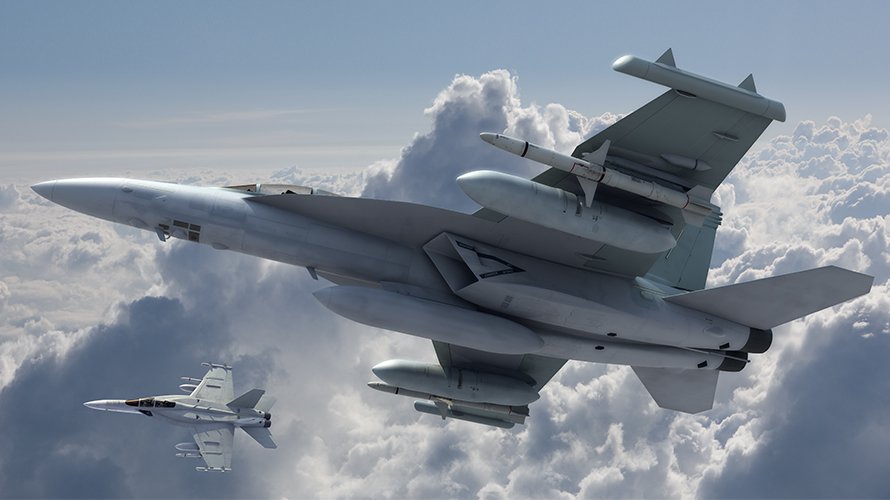
The next phase of the Navy’s effort to replace its decades-old ALQ-99 jamming systems on its fleet of electronic warfare aircraft is in a holding pattern amid a protest from a company cut from the competition, USNI News has learned.
As part of rapid acquisition push for the new jamming technology, the Navy is splitting up the Next Generation Jammer (NGJ) ALQ-99 replacement work into three increments based on the frequencies the system must block – high-band, mid-band and low-band – to help shield U.S. aircraft from anti-air radar systems.
In 2013, Raytheon won a $276 million award for the first portion of the NGJ project – the ALQ-249 mid-band jamming part of the new system – and was awarded an additional $1.2 billion for the work in 2016.
In late 2017, Naval Air Systems Command announced a “demonstration of existing technology” contract to shape how it would pursue the low-band increment. The work would create “[a] demonstration that will lead to an assessment of the maturity level of the technologies that might be applied to a low band jammer pod,” a NAVAIR spokesperson told USNI News in a statement on Tuesday. “This will help inform the appropriate acquisition strategy of the program.”
Last month, L3 and a team of Northrop Grumman and Harris were selected to move forward from a field of four competitors that also included Raytheon and a Lockheed Martin and Cobham team, USNI News has learned. Soon afterwards, Raytheon filed a protest with the Government Accountability Office, arguing it should have been selected to move forward with the low-band jammer effort.
Both L3 and the Northrop Grumman/Harris team confirmed that their low-band tech was selected for potential further study by NAVIAR but referred additional questions to the Navy due to the ongoing protest from Raytheon.
“We have a mature and exceedingly capable offering for Next-Generation Jammer Low Band,” a Northrop spokesman told USNI News in a statement. “Northrop Grumman stands ready to demonstrate that technology.”
USNI News understands a Lockheed Martin/Cobham team was not selected for further study. A Lockheed spokesperson referred questions to the Navy citing the protest.
In a short statement, Raytheon implied the Navy did not fully take into account the benefits of the company’s existing investment into the ALQ-249 mid-band jamming technology.
“We believe there were errors in the government’s evaluation,” Dana Carroll, a Raytheon spokeswoman, told USNI News in a statement. “Our low-risk, open architecture pod effectively and affordably counters modern threats while maximizing reuse of proven technology and taxpayer investment.”
The GAO has until October to reach a decision on Raytheon protest.
The Next Generation Jammer program has been a weak point the Navy’s push to revitalize its aerial electronic warfare portfolio after the service shrugged off developing an improved capability for years in favor of other priorities. The program was placed on the backburner for years while the U.S. was mostly engaged in conflicts with largely uncontested airspace.
However, with the national defense focus of “great power competition,” along with accelerated capabilities in both Chinese and Russian radar systems and anti-air warfare systems, the NGJ capability was given new importance and was placed on a list of accelerated acquisition programs that was overseen by former Pentagon acquisition chief Frank Kendall. That emphasis to improve the electronic warfare capability has carried over into the current administration.
Last month, Capt. Michael Orr told reporters at the Farnborough Airshow that early iterations of the system would begin aerial testing next year and the entire system was set to reach an initial operational capability sometime in 2022, according to Breaking Defense.
The gradual introduction of the NGJ systems onto U.S. and Australian Boeing EA-18G Growlers will initially augment the ALQ-99 before eventually replacing the legacy capability, according to NAVAIR.





